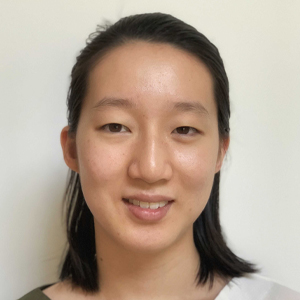There and back again: A Barbadian biochemist’s tale
On a resume, Shane Austin’s scientific path looks remarkably straightforward. He started with a double major undergraduate degree in biochemistry and chemistry, moved directly to a research master’s degree, completed his Ph.D. in five years, and landed an academic position at his undergraduate alma mater.
On a map though, Austin’s path traces a giant triangle that spans the Atlantic Ocean. The port of origin is the island of Barbados, followed by a two-year stint in Canada, a doctorate in Austria and finally, a return to the University of West Indies Cave Hill Campus where he is now a lecturer in biochemistry.
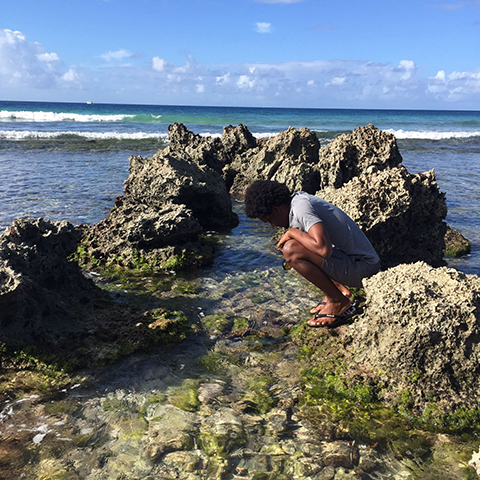
At each point on the journey, a combination of hard work and serendipity, plus a dash of bureaucratic logistics, determined his next steps. Coming out of high school, Austin wanted to go into medicine, a prospect that also excited his mother. That changed after his first year of college when he received a call from a program run by the Barbadian Ministry of Education that fully funds a select number of students who apply to do medicine.
The woman on the other end of the phone told Austin he’d been selected for the program and she needed a decision right away. In the moment, Austin wasn’t sure.
“I was like, ‘give me some time to think about it,’” he said.
The woman gave him some advice.
“She’s like, ‘Everybody I’ve called so far today, their answer was immediately yes. You give it some time, but also think about what I just told you.’”
Half an hour later, Austin called back to decline the offer. He’d realized that his heart wasn’t in medicine, but it wasn’t until his final year of college that he decided research was the path he wanted to follow.
In his third and final year, Austin worked on a research project on uterine fibroids, an experience that taught him just how little scientists know when they approach a new question.
“That’s when it really hit for me,” he said, laughing. “You really don’t know anything. My supervisor really doesn’t know the answers.”
From then on, curiosity about finding these answers propelled him forward.
The fast pace of a young lab
After graduation, Austin wanted to find a program outside of Barbados where he could study mitochondria. He applied for the island’s National Development Scholarship and, following the advice of a mentor who had studied in Canada, emailed a professor at McGill University. At the time, Julie St-Pierre, an associate professor of biochemistry, had just started her lab and was willing to take a risk on an international student.
After receiving his official acceptance, stressing over finances and finally receiving the news that he got the scholarship just two weeks before his term started, Austin became St-Pierre’s first graduate student. It didn’t feel real until the first day when he walked into a lovely glass building, sat down at his desk, and looked out at the scenery. Austin said he thought to himself, “Well, you were actually able to pull off this thing that seemed almost impossible.”
At McGill, he was thrown into a fast-paced environment where he worked to understand the role of the transcriptional co-activator protein PGC1-alpha in mitochondrial metabolism.
“It’s a bit of advice I always give to my students,” Austin said, reflecting on his time with St-Pierre. “If you’re looking to accelerate your career, join a young lab, because the possibility that you’re going to get to move really quickly is high.”
Austin published several papers, including a highly-cited review paper on PGC1-alpha’s dual effects of positively regulating mitochondrial respiration while minimizing unstable by-products, co-authored with St-Pierre. During this time, his mother, who Austin was quick to note had been supportive of his decision to pursue science instead of medicine, began to feel more secure about her son’s career.
Two years sped by, and before Austin knew it, he was looking at the end of his master’s program — and his scholarship funding. Despite passing his qualifying exams to continue a Ph.D. at McGill, Austin wasn’t getting a clear answer from the development program about whether his financial support would continue. So, he turned his eye toward programs in Europe.

Timely lessons
Austin didn’t match with his first-choice programs in Austria but eventually found a position co-mentored by two principal investigators at the Medical University of Vienna and the Center for Molecular Medicine of the Austrian Academy of Sciences. Once again, he journeyed thousands of miles to start a new chapter.
In Montreal, Austin had been struck by how seamlessly Canadians switched between two languages. He never had to become fluent in French; it was always faster to communicate in the common language — English. In Austria, things were different. English was no longer a first language, and while he could still communicate, it was not as fluid as in Canada.
There was also workplace culture shock. At McGill, he frequently stayed in the lab past 8 p.m., and he wasn’t the only one. In Vienna, most people were out by 5 p.m., and they encouraged him to leave with them. Even with five weeks of paid vacation and a bounty of public holidays, Austin found himself struggling to accept that he could take time off.
Austin said he also learned something else about time in Vienna. “If you really want these good-quality papers that have a complete story, it does take time,” he said.
His proposed project focused on LETM1, a transmembrane protein that regulates calcium ion transport in the inner mitochondrial membrane. An essential and well-conserved protein, its absence is implicated in the rare genetic disorder Wolf-Hirschhorn syndrome. The project included three components.
One part focused on using yeast as a model organism to examine the mitochondrial activity of LETM1. Another used proteomic techniques to identify the protein’s interaction partners, and the last component used molecular biology and classic biochemistry to determine the function of these proteins. In the end, Austin was able to finish some, but not all, of his goals. When he left, he had published one paper and had two more in drafts, one of which another Ph.D. student wrapped up.
In the fourth year of his Ph.D., Austin heard from a former professor at Cave Hill that a lecturer position would be opening up. Was he interested in returning to his former program as a teacher?
Science on an island
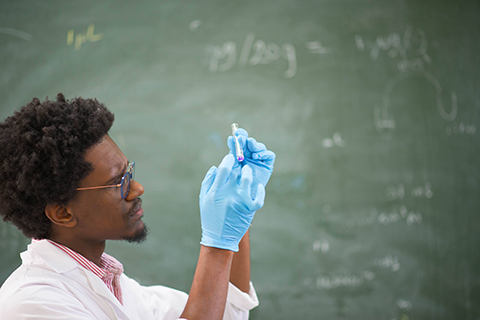
Once again, Austin wasn’t 100% sure about taking the leap. He worried that he wouldn’t be able to do the research he wanted to do because Barbados has fewer scientific resources.
“Science on an island is exactly what it sounds like,” he said. “The things that you need to do science on an island have to come from somewhere, and that sometimes poses a real challenge.”
He had to pivot away from the cancer research he was doing — but there were still plenty of questions in mitochondria, metabolism and eco-physiology. That concern settled, his decision became much simpler. Barbados was his home, his family was there, and he knew the department at Cave Hill was a good one.
In early 2017, Austin became a lecturer of biochemistry, teaching among the professors who had taught him. During a few trips back to Vienna, he wrapped up his doctoral research, and he defended his thesis on a special day in February — Valentine’s Day.
He now has several research focuses. One is picking back up with his undergraduate research on uterine fibroids in women, specifically Afro-Caribbean women. A graduate student working on this project is examining a possible correlation between vitamin D levels and the severity of fibrates. Another project goes in a different direction, tuning into the metabolism of nerite snails, which have a limited marine habitat between low and high tide. A third project looks at novel mitochondrial inhibitors using local Barbadian flora and fauna.
A fourth research area is pedagogical. Austin is on a mission to make sure students understand molecular illustrations, the brightly colored squiggles that populate biochemistry textbooks. One day in class, he hit upon the idea of using Lego bricks as an analogy for molecular processes. He brought a set into class and watched as students instantly became more engaged with the concepts they were learning.
Austin continued to find new ways to use Legos and eventually decided to write up his teaching strategies in papers, including this one from 2023.
Opening other doors
In the same year, he joined the ASBMB’s Maximizing Access Committee. At both of his postgraduate institutions, Austin learned the challenge of being one of the few Black persons in a space.
“There were other persons of various diverse ethnicities, that is true,” he said. “But I felt like I was still probably the one of maybe two or three Black persons in the whole department. Certainly, there were no Black PIs.”
Not having had that role model feeds directly into his efforts to improve diversity in science, Austin said. He doesn’t know what impact a more diverse environment would have had on his career, but he’d love to help provide it for future scientists.
“I still managed to succeed,” he said, “but I think it’ll be so great if, aspirationally, persons could look around in a department that they’re in, or look around in a space that they’re in, and see more persons that look like themselves.”
When it comes to advising his own students, Austin likes to remind them that they’re not locked into doing just one thing for the rest of their lives. Although his own path has been fairly linear, he encourages his students to keep their options open and to look for what brings them joy and passion.
And he repeats a well-worn piece of advice: Don’t give up. Of course, there might come a time when you’ve given all you can and it’s not working, and then there is tremendous value in knowing when to pivot.
“But if you feel like, ‘this just requires a little bit more, just a little push more,’ give it that push more,” he said. “It might not end the way you think or want, but it might open another door.”
Enjoy reading ASBMB Today?
Become a member to receive the print edition four times a year and the digital edition monthly.
Learn moreGet the latest from ASBMB Today
Enter your email address, and we’ll send you a weekly email with recent articles, interviews and more.
Latest in People
People highlights or most popular articles

Bibel named assistant professor
She began her position at Loyola Marymount University in August 2025.

Unraveling the language of histones
Philip Cole presented his research on how posttranslational modifications to histones are involved in gene expression and how these modifications could be therapeutically targeted to treat diseases like cancer.
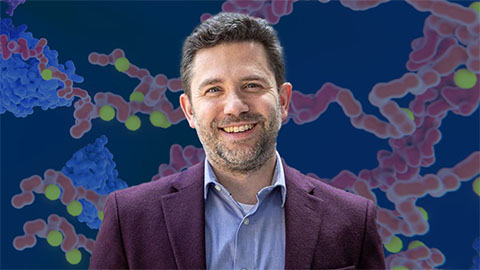
Cotruvo named Blavatnik award finalist
He received a $15,000 prize and was honored at a gala in October.
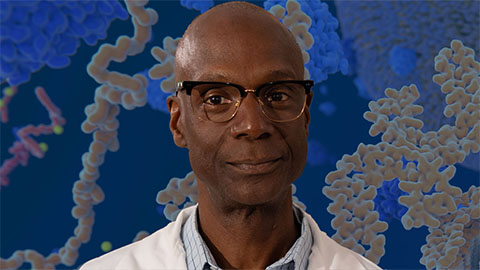
Phosphatases and pupils: A dual legacy
Yale professor Anton Bennett explores how protein tyrosine phosphatases shape disease, while building a legacy of mentorship that expands opportunity and fuels discovery in biochemistry and molecular biology.
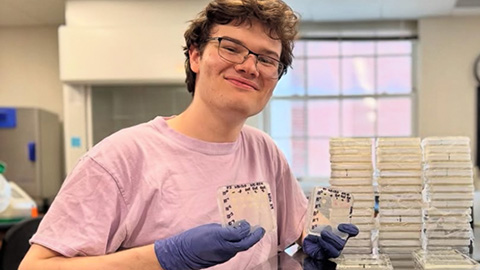
Summer research spotlight
The 2025 Undergraduate Research Award recipients share results and insights from their lab experiences.
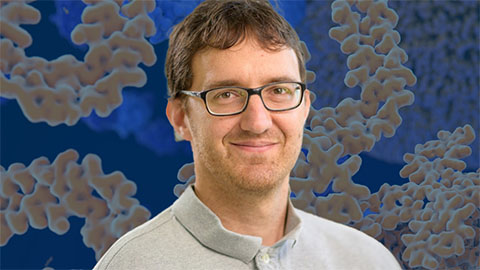
Truttmann recognized for cell stress research
He was honored by the Cell Stress Society International for his work on heat shock protein 70.

